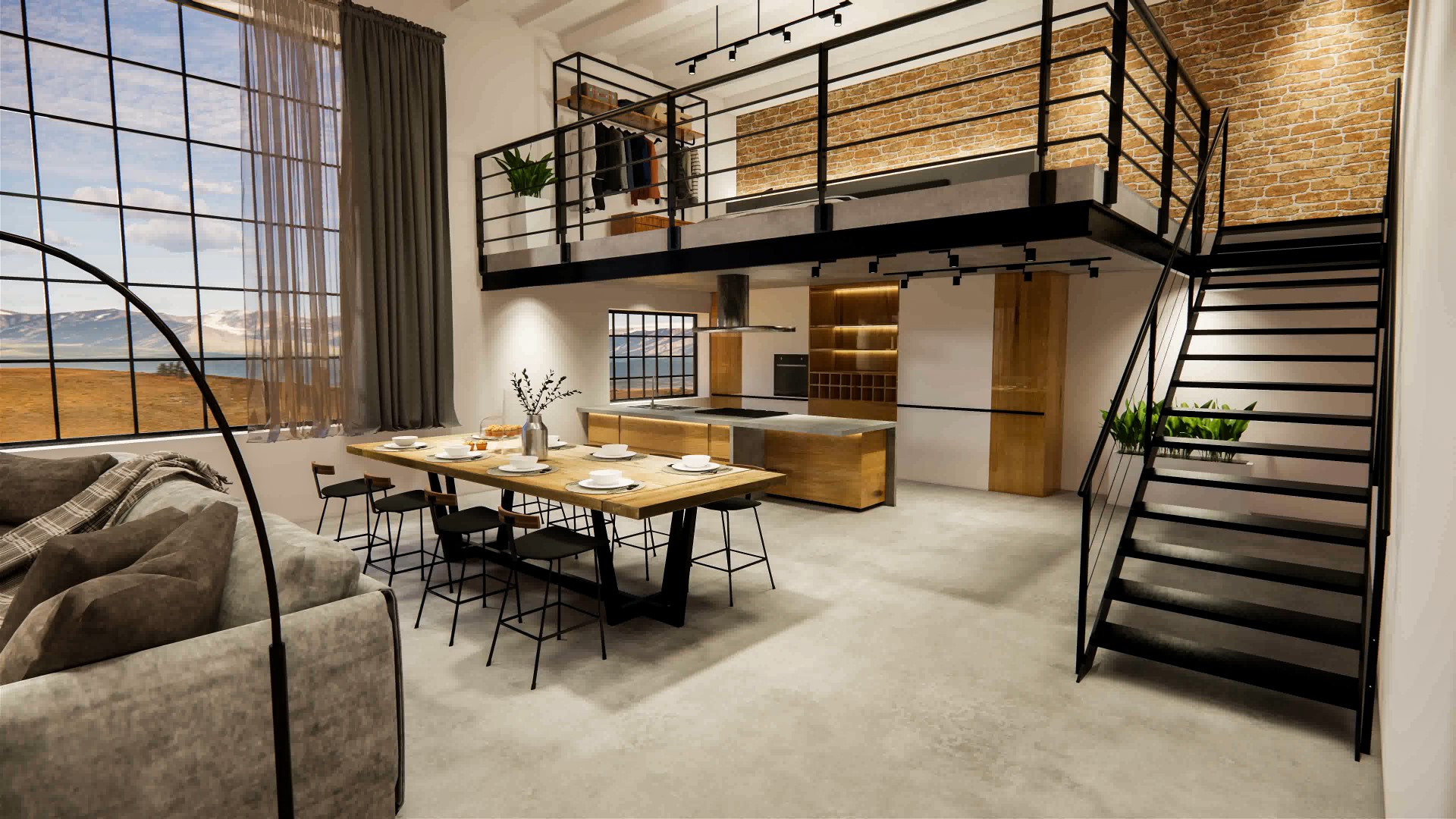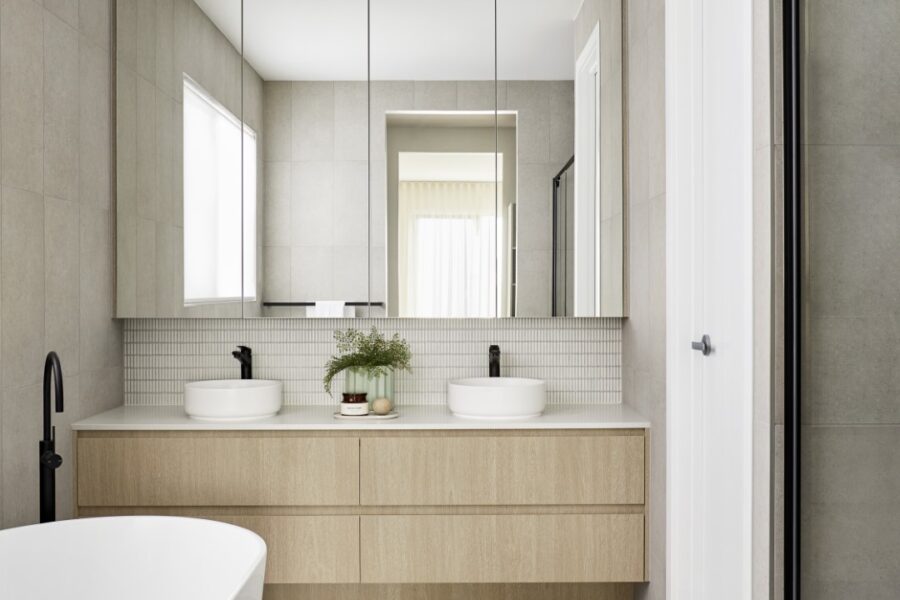Toronto, a bustling metropolis known for its diverse culture and vibrant real estate market, offers unique living options, one of which is the increasingly popular loft. Lofts in Toronto cater to a variety of residents, from artists seeking creative spaces to young professionals desiring a trendy lifestyle close to urban amenities. This comprehensive guide delves deep into the world of Toronto lofts, offering insights into why they are sought after, where to find them, and how to make the most out of loft living.
What Are Toronto Lofts?
Lofts are typically characterized by large, open spaces originally used for industrial purposes before being converted into residential units. These spaces often feature high ceilings, large windows, and minimal internal walls. In Toronto, the loft movement began as a part of urban revitalization projects in neighborhoods that previously housed warehouses and factories.
Key Features of Lofts:
- Open Concept Layouts: The lack of internal walls offers creative freedom in interior design. Lofts provide versatile spaces that can be customized to fit individual preferences and needs.
- Industrial Elements: Exposed brick walls, wooden beams, and visible ductwork are commonly retained in loft conversions, adding character and a unique aesthetic.
- Large Windows: Originally designed for factories, the expansive windows allow for abundant natural light, creating a bright and airy atmosphere within the space.
The Appeal of Loft Living in Toronto
Loft living isn’t just about the space; it’s a lifestyle choice. Residents of Toronto lofts often cite the blend of architectural character and modern amenities as a primary appeal.
Architectural Uniqueness: Each loft has its own distinct features that stand out from conventional apartments or houses. The industrial heritage of many loft buildings adds a sense of history and authenticity to the living experience. Exposed brick walls, high ceilings, and large windows provide a unique aesthetic that is hard to replicate in other types of housing.
Lifestyle Benefits: Lofts in Toronto often attract individuals who enjoy living in a dynamic, urban environment. Their layout and location facilitate a vibrant lifestyle, close to cafes, shops, and cultural hotspots. Many lofts are situated in trendy neighborhoods, allowing residents to immerse themselves in the city’s vibrant arts scene, nightlife, and culinary delights.
Demographics Attracted to Lofts:
- Artists and Creatives: Lofts provide ample space and natural light, making them ideal for artists seeking studio spaces or individuals who require a dedicated area for creative pursuits.
- Young Professionals: Many young professionals are drawn to the unique aesthetic and urban lifestyle that lofts offer. The proximity to downtown offices, entertainment districts, and transportation hubs makes lofts a desirable choice for those seeking a convenient and vibrant living experience.
- Empty Nesters and Downsizers: Empty nesters and individuals looking to downsize often appreciate the spaciousness and character of lofts. The open concept layout allows for flexibility in design and the potential to create a personalized living space that reflects their individual style.
Popular Locations for Lofts in Toronto
Toronto boasts several neighborhoods known for their beautiful and unique lofts. Each area has its own distinct charm and character, attracting different types of residents.
Distillery District: Known for its Victorian industrial architecture, the Distillery District offers historic lofts converted from old distilleries. The cobblestone streets, art galleries, and unique shops create a charming and vibrant atmosphere.
Liberty Village: Situated just west of downtown Toronto, Liberty Village is a neighborhood with a mix of old and new buildings. It has become a popular destination for young professionals seeking a trendy and convenient urban lifestyle. The area is known for its converted industrial buildings, which house a variety of loft-style residences.
Queen West: Queen West is famous for its artsy vibe and eclectic mix of shops, restaurants, and galleries. This vibrant neighborhood is home to a wide range of lofts, from converted warehouses to modern loft-style condominiums. Queen West attracts artists, musicians, and creative individuals who appreciate the area’s vibrant cultural scene.
King West: Located just south of Queen West, King West is another popular neighborhood for loft living. It offers a mix of converted industrial spaces and modern loft-style buildings. King West is known for its trendy restaurants, bars, and nightlife, making it a favorite among young professionals.
Each of these areas combines the charm of historical architecture with the convenience of modern urban living, making them highly desirable for loft dwellers.
Buying vs. Renting Lofts in Toronto
When considering a loft in Toronto, one of the first decisions to make is whether to buy or rent. Each option has its own advantages and considerations.
Buying a Loft:
- Long-term Investment: Buying a loft can be a significant investment but promises
long-term benefits like property appreciation. Toronto’s real estate market has historically shown strong growth, making it an attractive option for those looking to build equity and potentially generate rental income in the future.
- Customization: Owners have the freedom to customize their lofts extensively, allowing them to create a living space that reflects their personal style and preferences. From layout modifications to interior design choices, owning a loft provides the opportunity for complete creative control over the space.
Renting a Loft:
- Flexibility: Renting offers less financial commitment and more flexibility to move. This can be advantageous for individuals who value the ability to explore different neighborhoods or who have uncertain living arrangements.
- Lower Responsibility: Renting a loft typically comes with fewer responsibilities for maintenance and repairs compared to owning. Landlords or property management companies are responsible for addressing any issues that may arise, allowing renters to focus on enjoying their living space.
Deciding whether to buy or rent a loft ultimately depends on individual circumstances, financial considerations, and long-term goals. It’s essential to evaluate personal preferences, financial stability, and lifestyle factors before making a decision.
The Cost of Lofts in Toronto
The cost of lofts in Toronto can vary widely based on location, size, and amenities. Prices for buying lofts might range from CAD 500,000 to over CAD 1 million, depending on factors such as the neighborhood, square footage, and unique features of the loft. Rental prices can vary from CAD 1,800 to CAD 3,500 per month, depending on similar factors.
It’s important to note that loft prices in Toronto have experienced significant growth in recent years, driven by high demand and limited supply. Working with a knowledgeable real estate agent who specializes in lofts can provide valuable insights into current market trends, pricing, and potential investment opportunities. Websites like Realtor.ca provide current listings that can help gauge current market prices.
The Process of Finding the Right Loft in Toronto
Finding the right loft involves several steps, from defining your needs to visiting potential spaces. Here is a step-by-step guide to help you navigate the process:
- Define Your Needs: Before beginning your search, take some time to determine your specific requirements. Consider factors such as the desired neighborhood, square footage, number of bedrooms, and any specific features or amenities you prioritize.
- Find a Specialized Agent: Working with a real estate agent who specializes in lofts can greatly simplify the search process. These agents have in-depth knowledge of the loft market, access to exclusive listings, and can offer valuable insights and guidance throughout the process.
- Visit Multiple Lofts: It’s essential to visit multiple lofts to get a sense of what is available and to refine your preferences. Take note of the layout, natural light, noise levels, and any unique features that stand out. This will help you make an informed decision and ensure that the loft you choose aligns with your needs and preferences.
- Consider the Neighborhood: When choosing a loft, consider the neighborhood in which it is located. Research the amenities, proximity to public transportation, schools, parks, and other factors that are important to you. It’s also helpful to spend time exploring the neighborhood to get a sense of the community and the lifestyle it offers.
Considerations When Choosing a Loft
When choosing a loft, several considerations can help ensure that you find the perfect space to suit your needs and preferences:
- Space and Layout: Consider the size and layout of the loft. Determine if the space meets your living and/or work needs. Think about how you envision using the space and whether it allows for flexibility in design and functionality.
- Building Amenities: Some loft buildings offer amenities such as gyms, rooftop terraces, concierge services, or communal spaces. Consider which amenities are important to you and how they will enhance your living experience.
- Neighborhood: The neighborhood in which the loft is located plays a significant role in determining your overall living experience. Consider factors such as safety, convenience, access to amenities, and the overall vibe of the neighborhood. Research the local amenities, nearby parks, restaurants, and cultural attractions to ensure they align with your lifestyle preferences.
Living in a Toronto Loft: What to Expect
Living in a loft can be exhilarating yet challenging. The open space might need clever furniture placement to define areas like the bedroom, living room, and office. Loft living often encourages a minimalist approach to design, as the open layout lends itself to a more streamlined and uncluttered aesthetic.
Community and Social Aspects: Many loft buildings foster a sense of community among residents. Community events, shared spaces, and amenities can provide opportunities to connect with neighbors and create a sense of belonging.
Potential Challenges: Loft living may present some challenges, such as noise from neighboring units, limited storage space, or potential heating and cooling issues due to the open layout. However, with proper planning and design choices, these challenges can be mitigated.
Interior Design Tips for Lofts
Maximizing a loft’s potential involves creative interior design choices that complement the unique characteristics of the space. Consider the following tips when designing your loft:
- Use of Dividers: Employ bookshelves, curtains, or room dividers to create distinct areas within the open space. These dividers can help define separate zones for sleeping, living, dining, or working, providing a sense of privacy and functionality.
- Lighting: Enhance the natural light in your loft with well-placed lamps and light fixtures. Consider using a combination of ambient, task, and accent lighting to create a warm and inviting atmosphere.
- Furniture Selection: Choose furniture that complements the industrial aesthetic of the loft without overcrowding the space. Opt for pieces that are proportionate to the size of the loft and consider multifunctional furniture to maximize functionality and storage.
- Embrace Minimalism: The open concept layout of a loft lends itself well to a minimalist design approach. Embrace simplicity and decluttering, allowing the unique architectural features of the loft to take center stage.
Legal and Practical Aspects of Loft Living
Before moving into a loft, it’s important to understand the legal and practical aspects associated with loft living. Consider the following:
- Zoning Laws and Regulations: Familiarize yourself with the local zoning laws and regulations that govern loft living in Toronto. Ensure that the loft you choose is legally designated for residential use and complies with all relevant regulations.
- Building-Specific Considerations: Each loft building may have its own set of rules, regulations, and bylaws that residents must adhere to. It’s essential to review and understand these guidelines to ensure a harmonious living environment.
- Building History: Understanding the history of the building in which the loft is located can provide valuable insights into potential issues or challenges. Research the building’s maintenance history, any ongoing or past legal disputes, and any planned or completed renovations.
Future of Loft Living in Toronto
The demand for lofts in Toronto continues to grow, driven by their unique appeal and the city’s focus on urban revitalization. As more industrial spaces are converted into residential units, the landscape of loft living will continue to evolve, potentially increasing the value of these properties. Developers are recognizing the demand for loft-style living and incorporating
loft-inspired designs into new construction projects.
Conclusion
Toronto lofts offer a unique blend of historical architecture and modern living. Whether you’re buying or renting, living in a loft can significantly enhance your urban living experience, provided you choose wisely based on your lifestyle needs and preferences. The open layout, industrial aesthetic, and vibrant neighborhood options make Toronto lofts an attractive choice for those seeking a distinctive and dynamic living environment.
Are you considering a loft in Toronto? Start by visiting some of the city’s iconic loft neighborhoods, consulting with a specialized real estate agent, or exploring online listings. Begin your journey towards a unique urban living experience today!
Discover more from Futurist Architecture
Subscribe to get the latest posts sent to your email.




